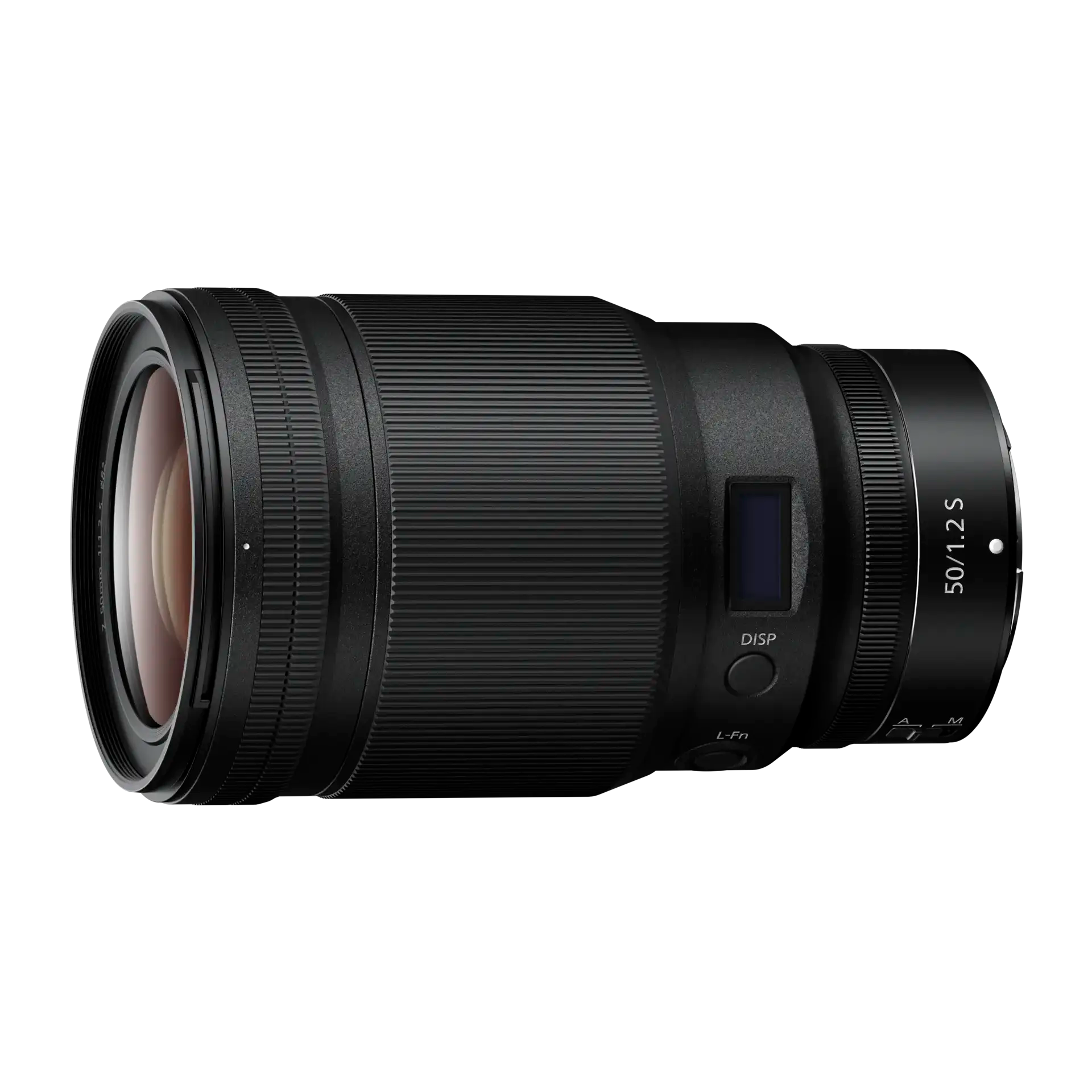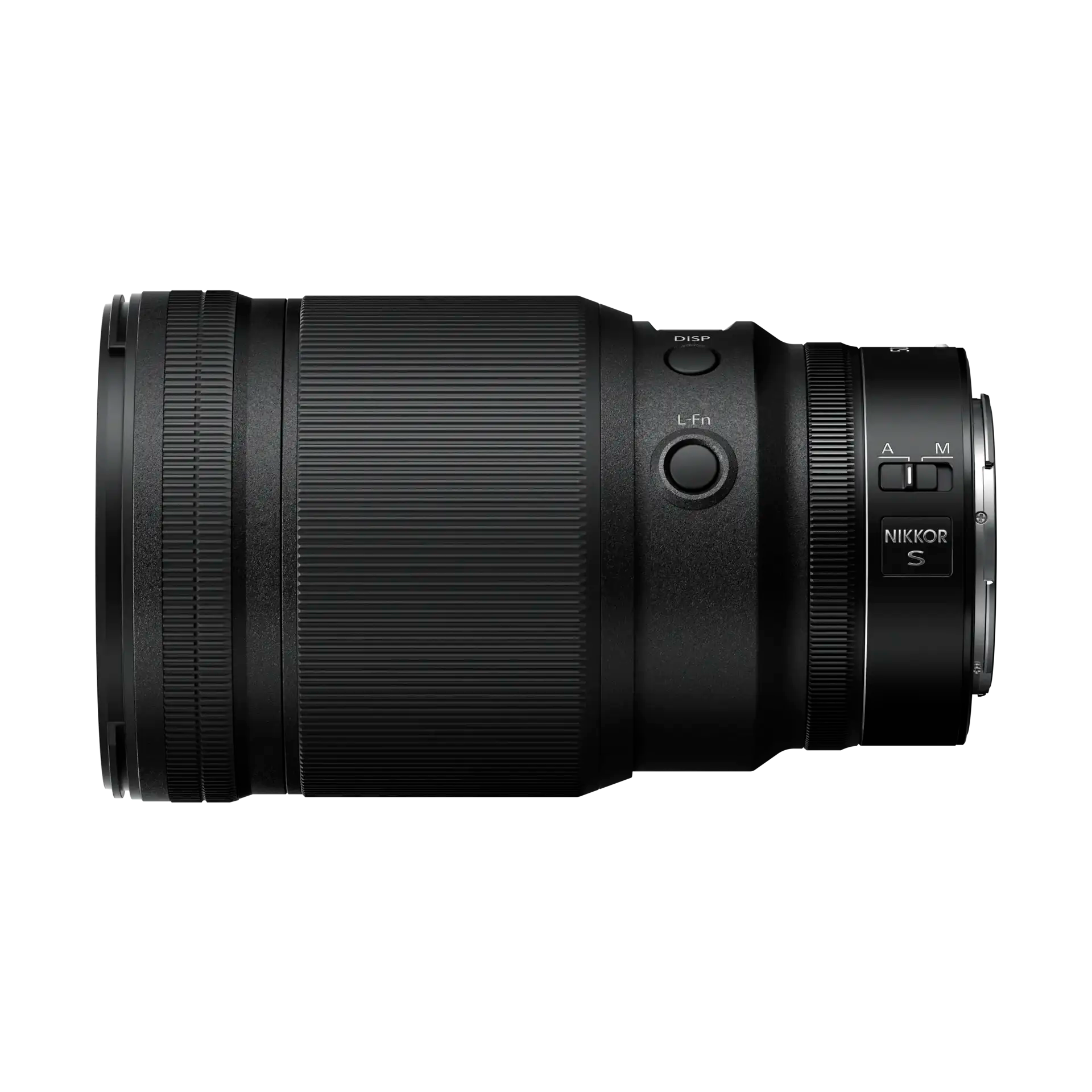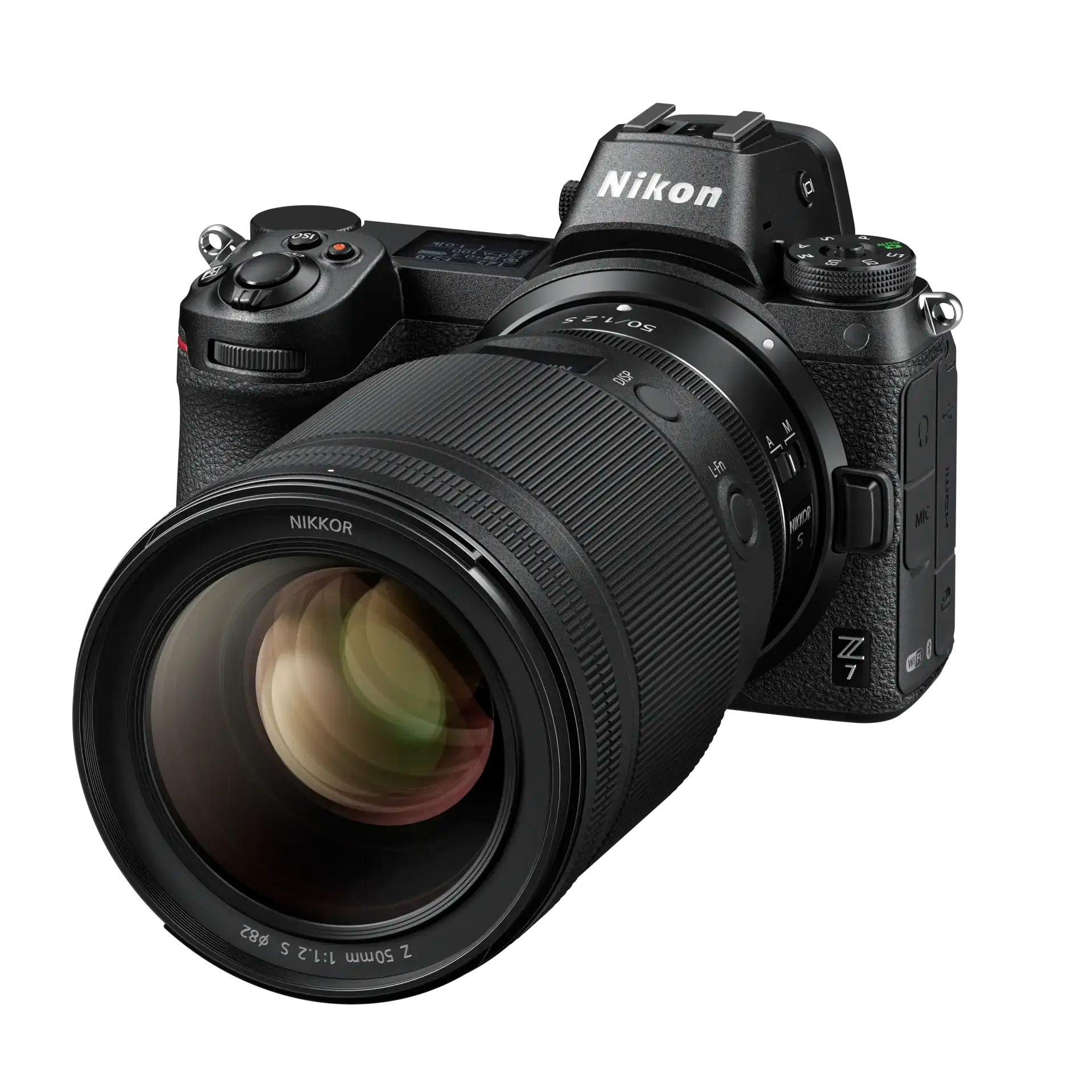Product Description
Nikon Z 50mm f/1.2 S Lens with OLED Display
Type: Nikon Z Mount
Format: FX/35mm
Focal Length: 50mm
Maximum Aperture: f/1.2
Minimum Aperture: f/16

Overview
Discover the Nikon Z 50mm f/1.2 S Lens, a quintessential addition to your photography toolkit, often dubbed the "nifty fifty." Renowned for its classic focal length, this lens excels in delivering remarkable brightness, stunning depth of field, and exceptional detail, making it an ideal choice for both photographers and videographers using Nikon mirrorless cameras.

Unmatched Low-Light Performance
The impressive f/1.2 maximum aperture offers unparalleled opportunities to experiment with light, allowing you to achieve stunning results even in challenging low-light conditions. The large Z mount complements this, enabling effortless captures, even with backlit subjects.

Advanced Optical Technology
Equipped with Nikon’s ARNEO and Nano Crystal Coatings, this lens virtually eliminates ghosting and flare, ensuring crystal-clear images. With 17 elements in 15 groups—including 2 ED (Extra-low Dispersion) elements and 3 aspherical elements—this lens guarantees outstanding optical performance. These innovative coatings enhance contrast and clarity, making it perfect for a wide range of shooting scenarios.

Creative Control for Videography
The Nikon Z 50mm f/1.2 S Lens is not just for photography; it’s an exceptional tool for video creators as well. With precise and quiet autofocus, you can utilise the lens's capabilities with minimal focus breathing. The smooth and customisable control ring provides effortless adjustments with the perfect amount of torque, allowing you to control exposure seamlessly—from bright highlights to deep shadows—ensuring your footage remains polished and professional.

Robust Build Quality
Designed for durability, the Nikon Z 50mm f/1.2 S Lens features a superior build quality with tightly sealed moving parts that keep dust and moisture at bay. The rubber sealing around the metal lens mount adds an extra layer of protection, making this lens a reliable companion in various shooting environments. Its fast and precise focusing capabilities allow for quick adaptations, whether shooting close-ups or creating dreamy backgrounds with a shallow depth of field.

Supplied Accessories
- LC-82B Lens Cap (Front Cap)
- LF-N1 Lens Cap (Rear Cap)
- HB-94 Lens Hood
- CL-C2 Lens Case

Conclusion
The Nikon Z 50mm f/1.2 S Lens is an essential lens for any serious photographer or videographer looking to elevate their craft. Its combination of exceptional optical quality, low-light performance, and robust construction makes it a versatile choice for capturing stunning images and high-quality video. Elevate your photography with the incredible capabilities of the Nikon Z 50mm f/1.2 S Lens today!

For full specifications click Here
Payment & Security
Your payment information is processed securely. We do not store credit card details nor have access to your credit card information.




















